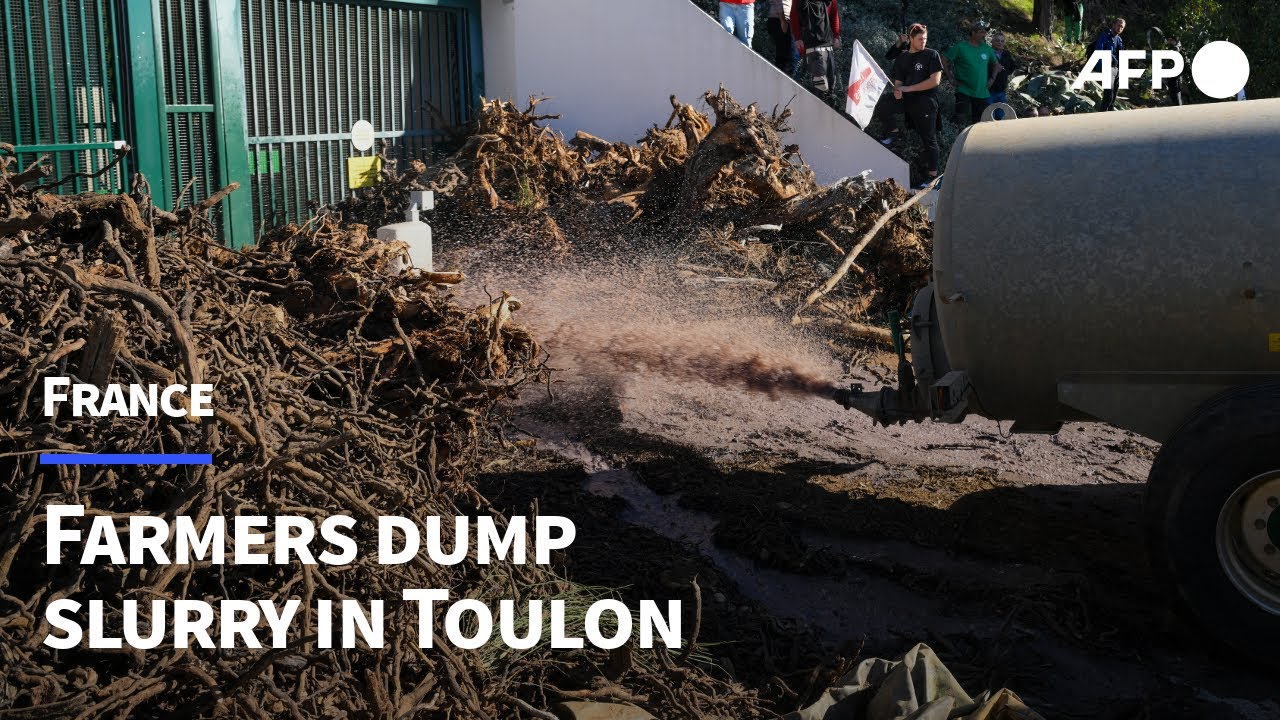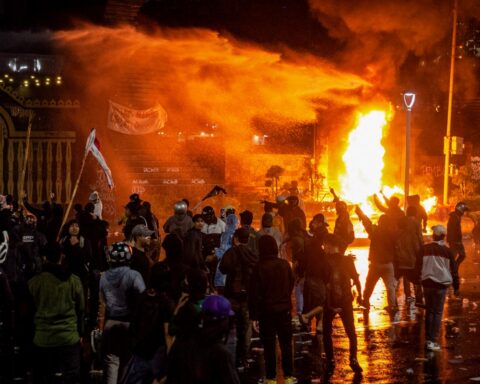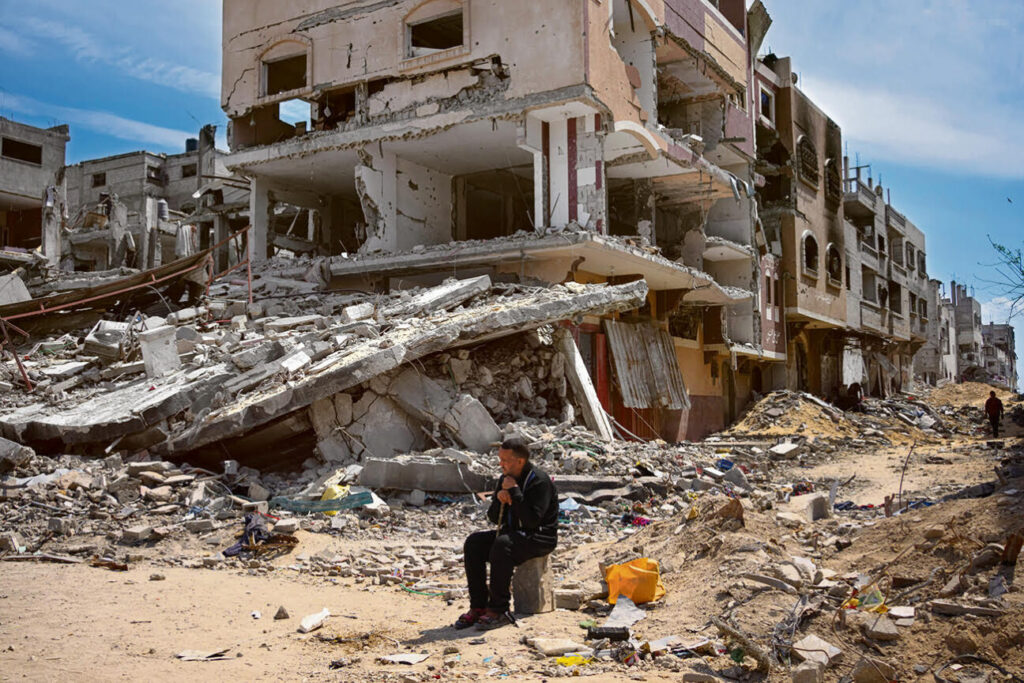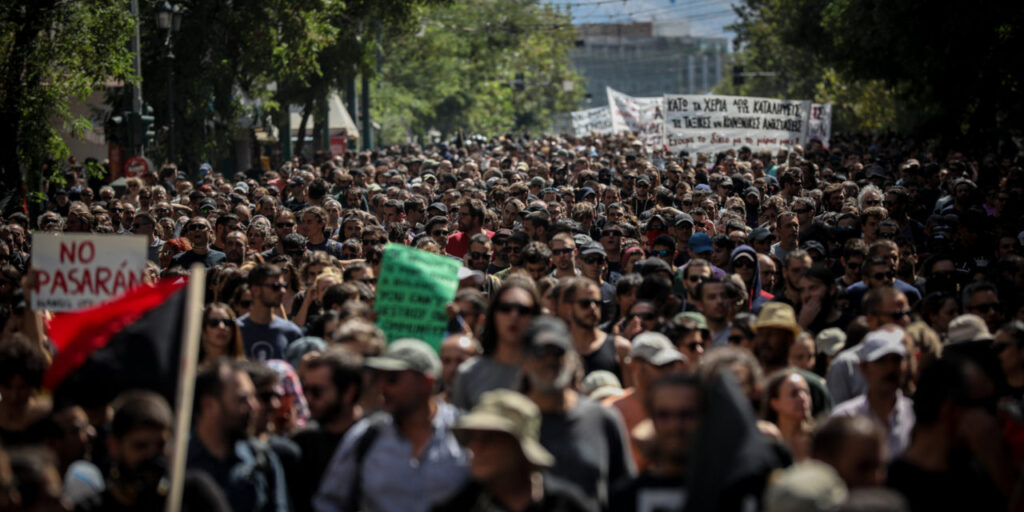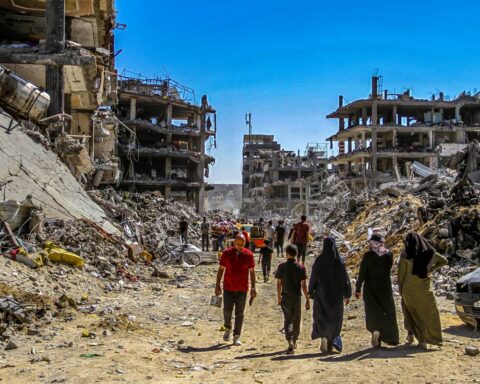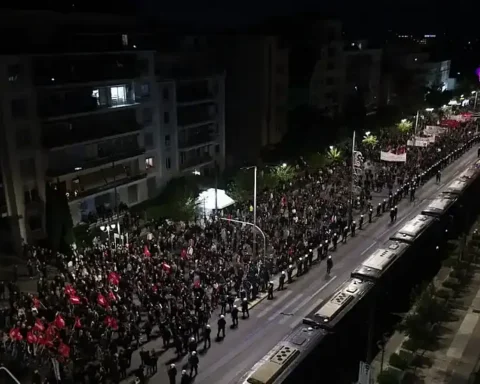In January of this year, while eco-justice activists were redecorating the Mona Lisa at the Louvre to protest climate change, French farmers besieged several French cities in protest against a range of policies threatening the material foundations of their way of life. In response to recent increases in agricultural costs due to the war in Ukraine and a drop in prices due to free trade policies implemented by the EU, tractors blocked the A6, a major highway leading into Paris, and in the south, farmers dumped manure and other agricultural waste on the front steps of city hall in Toulouse. The protests followed several months of protest at the end of 2023, and were echoed a month later by further protests in February of 2024.
The following article from Lundimatin seeks to provide some historical and existential context for the revolt, and to challenge some of the reflexes and assumptions of the left’s response. The article is of interest to us for two reasons. First, it helps explain the material basis of resistance to the mega-basins by organizations like Soulevement du Terre as well as the larger division between urban and rural workers in France. Second, it provides an excellent example of the kind of gap between contemporary leftist political categories and reflexes and the experience of rural workers that continues to provide an opening to the right wing, both in France and elsewhere. We take it to be the responsibility of partisans everywhere to find ways to close this gap and hope this article will make some contribution to that effort.
Charlatan Revolutionary Group
published in lundimatin#413, January 30, 2024
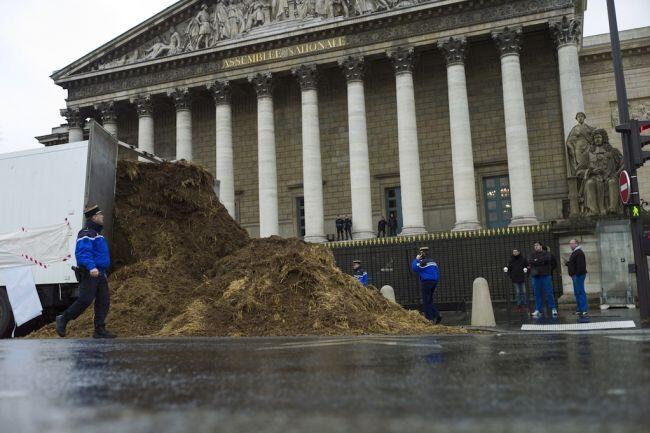
In recent days, we’ve seen prefectures covered in manure and set on fire, mutual insurance companies set ablaze, “foreign” trucks turned over by tractors and their food distributed to Restos du Cœur or burned on the asphalt. There are calls to surround Paris, others to rename the Élysée “Le Lisier” and a government particularly concerned not to add fuel to the fire. A ready-made media narrative, coordinated by both politicians and FNSEA representatives, has led us to view this movement solely from their point of view, i.e., their interests: agribusiness is allegedly engaged in a tug-of-war with the State to recoup a little cash and exert pressure against ecological regulations that are squeezing their margins. All this in a brown, reactionary and conservative atmosphere. Good. The Groupe Révolutionnaire Charlatan has sent us this text, which aims to approach the question by way of a completely different axiom: trying to understand revolt from its historical and ethical coordinates.
Lenin against the Muzhiks
“We have learned how to overthrow the bourgeoisie, how to suppress them, and we are proud of the fact. But we have not yet learned how to regulate our relations with the millions of middle peasants, how to win their confidence, and we must frankly admit it.”
– Lenin, speech to the 8th Congress of the CPSU
In public school history curricula we’re given all the great stages of “progress”–the Industrial Revolution, the rural exodus, the Republic–as a single uninterrupted series of pliant modifications, useful amenities, and welcome improvements to the lifestyles of backwards populations, thanks of course to the philanthropic efforts of an intrepid urban elite trained in the school of economic rationality. It’s this vision–not too far off from the one behind the colonial project–that we have in mind today when we talk about the peasant world.
The reality of primitive accumulation, the forced displacement of populations, and the obliteration of the rural world–the land, the languages and the peasant way of life all included–is still seen in many left-wing circles as a positive and necessary stage that, with all the promise of mechanization, is supposed to bring about an egalitarian society, free to decide on its modes and methods of production; in short, industry as a necessary step in the socialization of our means of existence.
After killing their boyars and dividing up their lands equally, the muzhiks registered thousands of grievances with the Petrograd Soviet and voted for the socialist-revolutionaries in droves, unaware, however, that with the ideological confusion that was Bolshevik modernization, a tsarless Moscow was still scheming against them. All they needed was 100,000 tractors to get the peasants out of the way of the only real historical struggle, that between the proletariat and bourgeoisie. The rest of society, their ways of life, their revolutions, were much less important; and a decade later they could be put to death by the thousands, at least those of them branded “kulaks”—anyone with the misfortune of owning two cows, an unconscionable sign of allegiance to the petty-bourgeoisie.
Of course this loaded history has no parallel with the contemporary situation in France, where the peasantry has all but disappeared. But it is indicative of how deep the left’s blind spots can cut, and of the plethora of social groups that still coexist in complete ignorance of one another. We firmly believe that a “revolutionary,” if such a thing exists, is whomever brings about revolution, regardless of his or her background or beliefs; anyone who, when society reaches the point of no return, takes a resolute stand for a new world.
It therefore seems useful to give a brief overview of the rural world in modern France, in order to better evaluate its current political situation. Revolutionary theory does not make abstract proclamations from on high, with the overarching goals of an outmoded theoretical system; it descends into the masses, tries to make sense of the clandestine promises of emancipation and the repressed desires for an egalitarian world that dwell in the heart of each individual—and, putting this secret discourse into a system, giving it a vocabulary, it extends the means to speak the language of revolution to everyone.
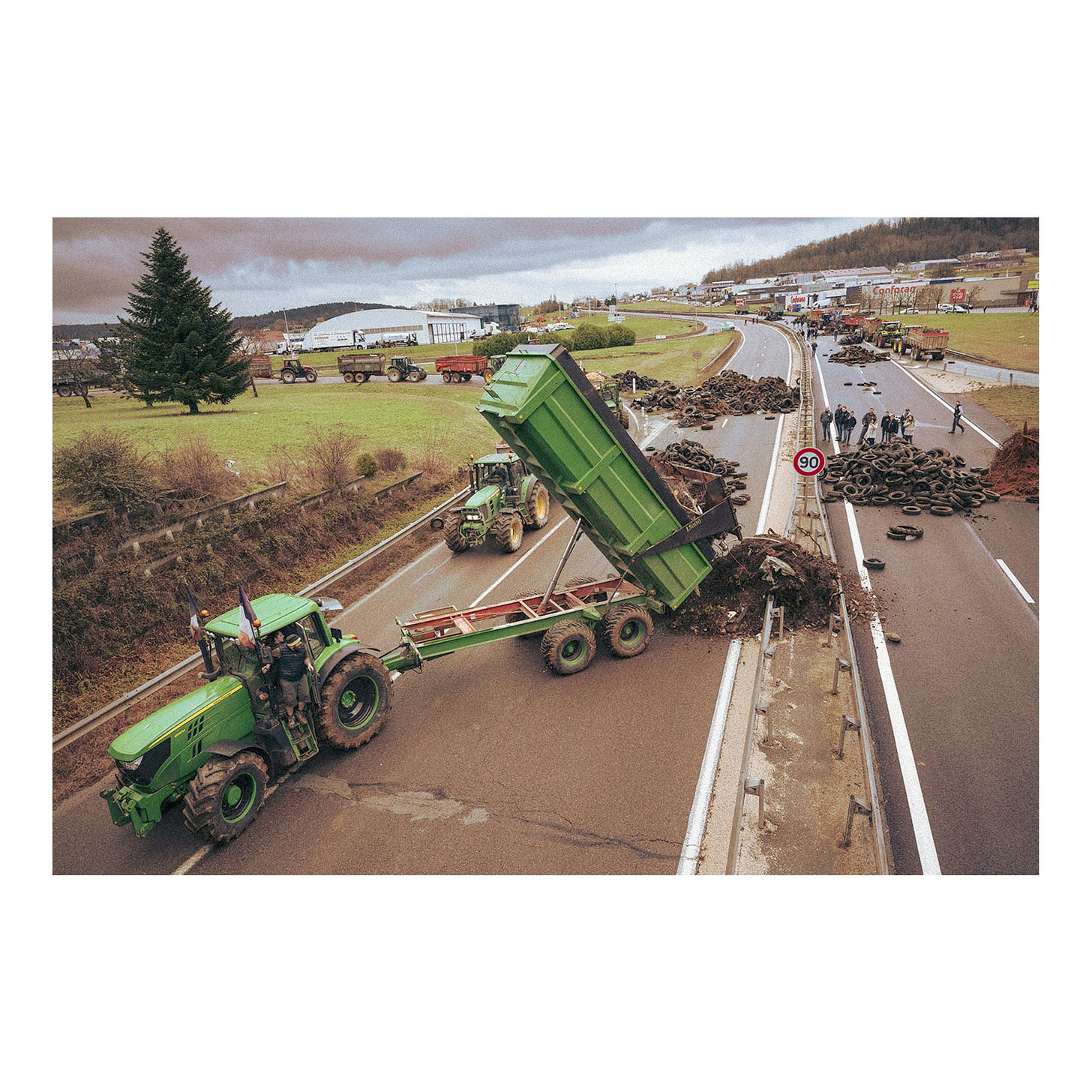
The peasant world since the second world war
“The man sitting in the iron seat did not look like a man; gloved, goggled, rubber dust mask over nose and mouth, he was part of the monster, a robot in the seat.”
“The driver sat in his iron seat and he was proud of the straight lines he did not will, proud of the tractor he did not own or love, proud of the power he could not control.”
– John Steinbeck, The Grapes of Wrath, 1939
In so far as it is possible to describe the peasant as the land’s most literal inhabitant–living off the earth and giving direct expression to the social and cultural singularity of his region through his customs, dialect and way of life–it should be made clear from the outset that this is not how the right sees them. This peasant–who is no longer with us–lived in their own civilization, with its own languages, traditions, ingrained particularities, as well as its own symbolic and religious systems. This dense web of particularisms was an obstacle to the projects of the State–the tax inspector and the soldier alike. How could they make their way in a world that spoke its own language, where the land was farmed as the people saw fit, and whose inhabitants may or not have given themselves family names–that could change from one village to the next?
The eradication of this incongruous race was therefore an integral part of the modernization effort, nullifying its particularities, mapping its lands, turning the father into the de facto representative of the group, and conscripting its sons to die in wars. But the earth has a thick skin, and it wasn’t until after the Second World War that this unification effort reached its final phase.
The material and social foundations of this very particular world were swept away during the Marshall Plan era by a series of structural modifications and intensive mechanization: hedgerows were cut down, ditches filled in, and gigantic plots marked out to be plowed by tractors driven by a new generation of farmers trained by Jesuits and Dominican modernizers in agricultural technical schools. The state invested billions in this project. In 1954 there were 230,000 tractors in France; by 1963, 950,000. The consequence of this acceleration was the definitive decapitation of a large part of the farming population, unable to expand and mechanize, and thus unable to compete.
A competitive labor market, productivity gains, crushing competition from small businesses, all of which ensured solid growth and consumption as a means of redistribution: nothing too harmful, as any liberal economics textbook will tell you.
But what became of the man on his iron machine? With all the family farms gone, all his neighbors became agricultural laborers or fled to the city, and he was left to feed the monster: to stay competitive in a capitalist economy, you have to keep moving. More land, more fertilizer, more machines. There are few subjects the various ideologies of modernization agree more on: working the land is a kind of bondage, a thankless task that weighs on the individual, confining him to his plot of land and the shadows of the pre-enlightened world. As it turned out, the technical and economic needs of the luminous modern world were leading the planet to its doom, and in the meantime creating a class of wage-earning consumers with a dull, repetitive existence, probably not that different from that of the workers of yesteryear–the kind of same dependence, only with gadgets and processed food. The modern farmer found his own new form of bondage in agro-industrial techniques.
This new technological dependence has three faces: dependence on the enormous debt amassed from the purchase of machinery and land; dependence on the agro-industrial networks that manage all stages of production and control all regulatory bodies; and dependence finally on the machine itself and its dynamics. After all, if your neighbor can buy a bigger tractor, buy smaller farmers off their land and fertilize to excess, how could you possibly beat his prices? With competitive markets and private property, farmers became each other’s executioners, just like the rest of society.
This logic only intensified with France’s entry into the European Union and the Common Market. Although the early days of agro-industry had a certain kind of success in France–i.e. increased competition–this situation came to a standstill in the 1980s, when the European market was flooded with cheaper products from other countries, while the creation of the WTO and the signing of several treaties ratified the end of customs protections.
Article 135 of the Treaty of Lisbon straightforwardly prohibits social harmonization, making it impossible for member countries to demand Europe-wide standards for labor rights. That would hardly be in the spirit of competition!
Modernization can therefore be summed up as a mixture of interdependent elements: land consolidation, a reduction in the number of farmers, an increase in the number of industrial farms, the dominance of monoculture, dependence on machines, inputs and chemistry.
All of this contributed to the current situation: from 2,500,000 farms in 1955, only 400,000 remain today, and the new European standards will cut large swathes out of that number too. The decline is first and foremost that of peasant farming, swept away in the progress of a system that has conquered French soil, and which feeds the misfortune and destitution of thousands of farmers everyday.
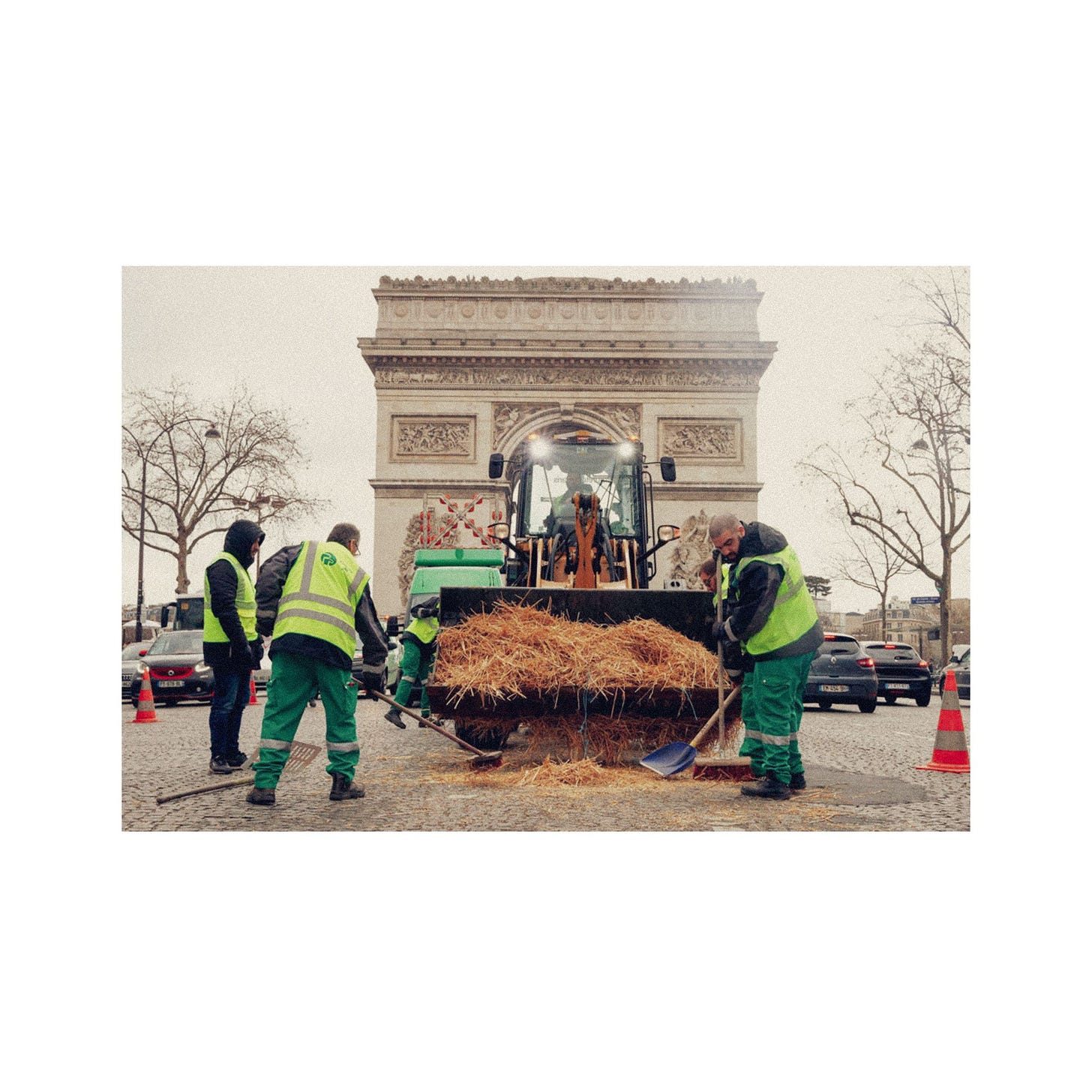
Agribusiness and the FNSEA
As with the cops, the same people we see in the media capitalizing on the number of suicides in the profession are often the same who instigated the working conditions and modes of sociability that caused them; a reactionary union like the Alliance Police Nationale–just like the FNSEA, in fact, defender of corporations and large-scale cereal production in the north of France–is only really there to boost careers, keep the dirty laundry in house, and maintain a lobby on behalf of the institution’s least scrupulous members. The FNSEA is particularly mafia-like in this respect.
But the transformation of agriculture into an institutional and corporatist structure is at least as complicated as the tidal wave-like upheaval of the mental and physical universe of those caught up in its gears. The left’s feverish eagerness to round things up into its own categories reveals a profound inability to grasp the social dynamics of certain sectors, and the prevalence of ideas and relationships to the State that differ from their own.
What does this eagerness tell us? That its contemptuous (and contemptible) ignorance of the agricultural world, with all its fractures and contradictions, keep it from attaining any real grasp on current events that doesn’t fall back on the truncated categories of a moralistic, urban leftism.
Let’s be clear: the FNSEA is still a powerful force, with many high hopes behind it and with its hand still on a number of levers. But when it comes to revolution, and all the more so in an age that’s lost all sight of class politics, union membership and electoral politics don’t tell us much about the real, concrete political dispositions of different groups. A number of past struggles have already revealed the inability of the Left’s intellectual software to comprehend the desires, sensitivities and pain of those belonging to certain social categories. This has long been the case, for example, with the suburban youth.
For city dwellers ignorant of the agricultural world’s many “faces,” it’s difficult to differentiate between the small-plot farmer, the large landowner and the “peasant” businessman. The figure of Arnaud Rousseau makes this flagrantly clear whenever he tires of running the same corporations behind the agro-industrial system, and goes on television to defend the interests of farmers, only to end up demanding measures to protect the economic model he himself profits from.
This powerful agri-business is the necessary consequence of the economies of scale required by land consolidation: by establishing gigantic monocultures to avoid paying for a larger variety of expensive machinery, we no longer have the resilience of a polyculture and end up with only two or three types of products to send to market. The only outlet for our production is the food industry. Scale up this pattern and here we are, irrevocably dependent on the logistics and chemical sectors, seed and livestock suppliers, slaughterhouses and so on. Over-specialization necessarily leads to dependence on industry at several levels; and as the FNSEA dominates the chambers of agriculture, it falls into a mafia-like arrangement between all the industrial sectors involved, from suppliers to supermarkets, to extract maximum profit from the farmer.
The farmer, on the other hand, is now an entrepreneur-worker saddled with debt–200,000 euros on average. A paradoxical double-bind: proletarian arms on capitalist shoulders, bound to technology and global commerce at the same time as a world experienced as rural and remote. Proletarianized in Marx’s sense because dispossessed of the means of production, in Wallerstein’s sense because blocked off from any possibility of buying and selling locally, and in Debord’s sense because deprived of a way of life. The disintegration of local communities reached the countryside and created, as in the rest of modern society, a decline in direct solidarities, the rise of consumer individualism, careerism and the middle-class, with the knowledge to boot of a fleeting population, only aggravating the sense of social isolation.
It is essential to understand the collapse of this world and the moral shock and the resulting sense of abandonment, if we are to fully comprehend what the farmers are asking for. The Gilets Jaunes stood at the periphery of the middle classes: people who had been promised the same lifestyle as upper-class consumers, particularly those living in cities, and who bitterly saw these hopes swept away by the economic slump. Farmers come from that same world, but with very different working conditions: after all, if it’s possible to set a human being to the cadences of a salaried routine–cities, with their traffic, commercial districts and giant dormitories are there for just that–it’s difficult to impose the same rhythm on the land. Even when industrialized to death, agriculture remains dependent on a host of natural and biological parameters that are difficult to adapt to the needs of the Market and Government–even if many engineers see it differently in their sick dreams.
Part of the left is trying to make up for this by replaying the old figure of the “model” working-class proletarian. There are thus good workers and bad bosses; the good, unionized “rank and file” ready for revolt, and the ever-scheming reformist “leadership.” And then there’s the inevitably reviled National Rally vote, but that’s for the wealthy elites to take care of, because, as we all know, good conscience always comes at a price.
On the institutional left, masters in the art of recuperation, it’s on the theme of Euroscepticism that the problem lies. With criticism of the European Union having been largely abandoned to the sovereigntist right, and part of the far right too, the institutional left is forced to limit its arguments to the demand for food security and better agricultural wages. The European Union pays subsidies to 8 out of 10 farmers–400,000 out of 500,000. The progressive plan relies on the Chambers of Agriculture, the national agency for agricultural management created a hundred years ago. In short, the aim is to make something of a reserve force for the EU’s Common Agricultural Policy, subsidizing the few farmers that remain with redistributive policies implemented at the national level, and all this against a backdrop of a downward trend in the number of European farmers.
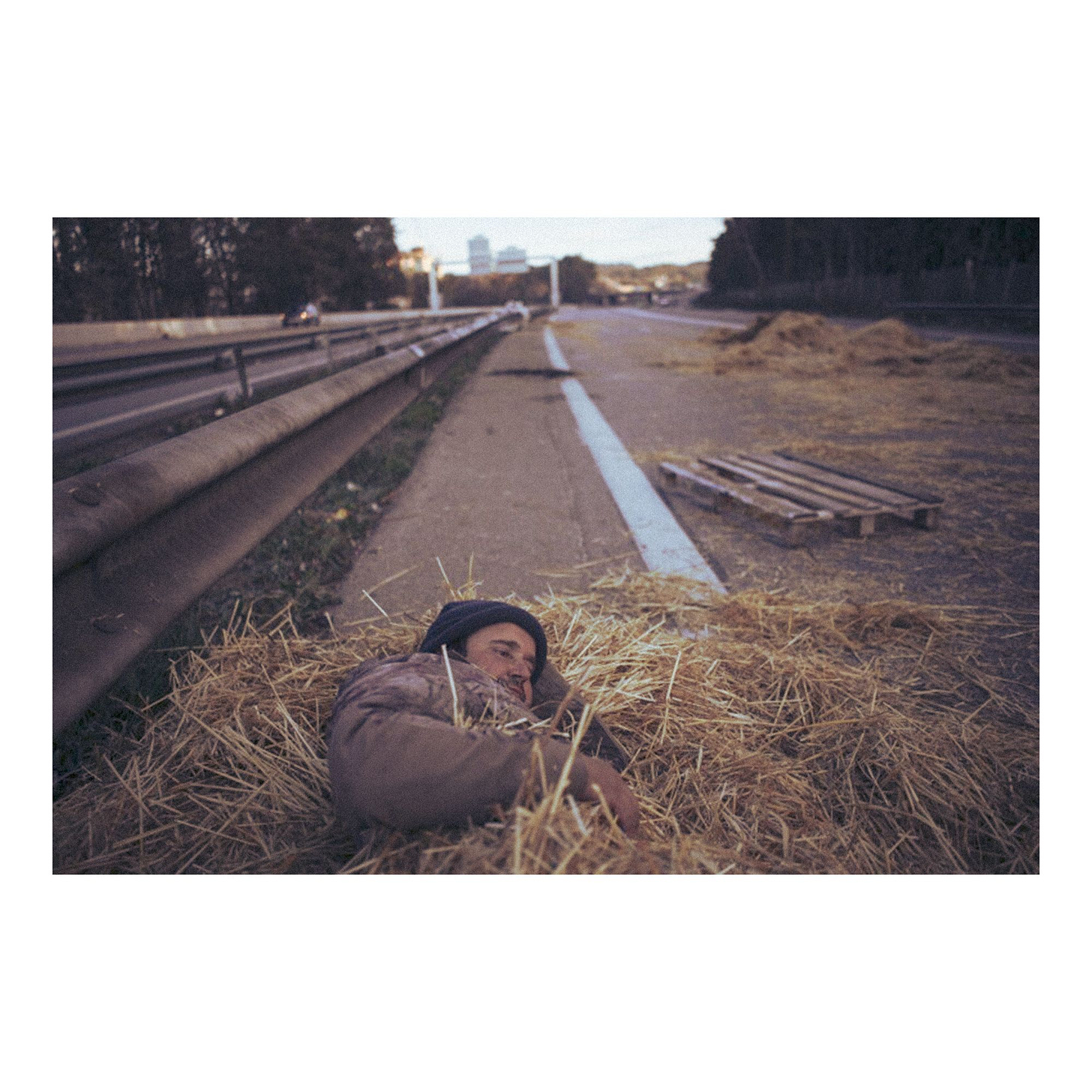
From the Gilets Jaunes to the Garbage Riots
Our aim in this text is to demonstrate that it’s no surprise that the minority factions of the ultra-left are systematically ultra-confused in the face of an event like this, incapable of grasping its meaning and scope; and that certain basic facts need to be reviewed if that faction that calls itself revolutionary is to live up to its own task. We won’t even mention the helpless gesticulations coming from the parliamentary left, who’ll try anything to seem like the defender of a people who no longer recognizes it. Their constant state of alarmism with regards to the far right is nothing more than the desperate discourse of electoralism, still trying to sell us the prophecy of a defiant electoral victory as the only way to save ourselves from the threat they pose. As far as we’re concerned, the real obstacle to mounting a counterattack is precisely the disempowerment of the citizen that comes from the vote itself.
What’s happening on the road blockades escapes both this electoral logic and the usual workings of social dialogue and its intermediaries–despite their being undermined by Macronian politics. François Purseigle is missing the point whenever he mentions the sociological differences between farmers and the Gilets Jaunes. Whether or not the former are closer to the upper sociopolitical categories or the lower is of no interest to us: what does matter is that yet another sector of the population is starting to refuse the institutional monopoly on politics.
The comparison with the Gilets Jaunes can only go so far: the revolt in winter 2018 was not a redundant occurrence, destined to be repeated, but the start of a whole new sequence in French politics. It shows a cruel lack of imagination to identify and compare events without recognizing the evolution taking place from one to the next. Nothing repeats itself; trends emerge, evolve and modify themselves. This is the only context in which comparison is really of any use, otherwise it does little more than feed a defeatist fetishism like that which took hold of the Champs-Élysées recently–which is not to be totally discarded, but it doesn’t represent the best use of our time and energy. The strength of the Gilets Jaunes movement lies in its capacity for constant renewal, its ability to pop up anywhere. Need we remind you?
The only repetitions in this case are the failure to confine the unrest to the union mold, to sort those causing the trouble into a few predefined factions, and to harness the movement with a few recognized spokespersons and watchwords. Just like the early days of the Gilets Jaunes, the movement is becoming autonomous, starting from a trigger point and broadening in a haphazard way towards a general feeling of exasperation. This vague but powerful sentiment is a very important indicator: it reveals the system’s inability to reproduce itself, a contradiction that has reached a point of unsustainability. We know that part of the population can no longer live as it used to; but what’s even more radical is that it can no longer imagine living as it used to–quite a shocking shift to come to terms with.
To go back to the events of 2023, we said in a text from the time that the shift we were seeing in strategies and in the widespread feeling of upheaval was struggling to produce a shift in minds and discourse.[1] What made the Gilets Jaunes so powerful–the shared feeling of having to start from scratch in order to succeed, the revolt that was unleashed as soon as a desire to regain control of our lives was born, the constant inventiveness, the revival of old, outdated forms of struggle–the Garbage riots failed to capture. Everyone recognized something new in the events that took place at the Place de la Concorde, instinctively understanding the new possibilities looming in the shared feeling of frustration with our passivity; a huge swathe of what hitherto had been impossible ceased to be so. It was the opposite of a crisis, the opposite of a stalemate: it was momentum. Hence the chaotically scattered marches, the new slogans, the unexpected convergences, the enormous sense of motivation.
What drained this momentum was the impossibility of translating it into everyday language, into the way we talk to each other about the situation.
This new situation existed only in embryo, in the collective unconscious. The repressive routine of union marches and the politicking of central government officials, who moved the dates around, blocked the coordination of strikes and riots, and prevented the prolonging of strikes. It was only by accident that any of these tactics were undermined in the first place. All this was overcome only by accident. What was missing was an awareness of the opposition between two irreconcilable positions, that everything should change and that nothing should change; neither of which were clearly articulated on either side. Had there been a serious attempt to translate this new situation into words and action, its explosive potential would have tripled.
But the atavistic mental software of the left was still stuck 30 years in the past, repeating the same banalities, rehashing the same repertoire. Without critically rethinking the role of the unions, the usefulness of their practices and the relevance of their slogans, we fell back into apathy less than three weeks after the start of this magnificent sequence of events. There’s a lot of collective responsibility for this; unable to pull their heads out of their asses, the “revolutionary” faction continued to repeat its slogans over and over again, drooling over the riot videos and tolerating the presence of members of parliament who only sought to calm the protest in order to better exploit it. No one with any sense of these shortcomings even tried to bring them to our attention.
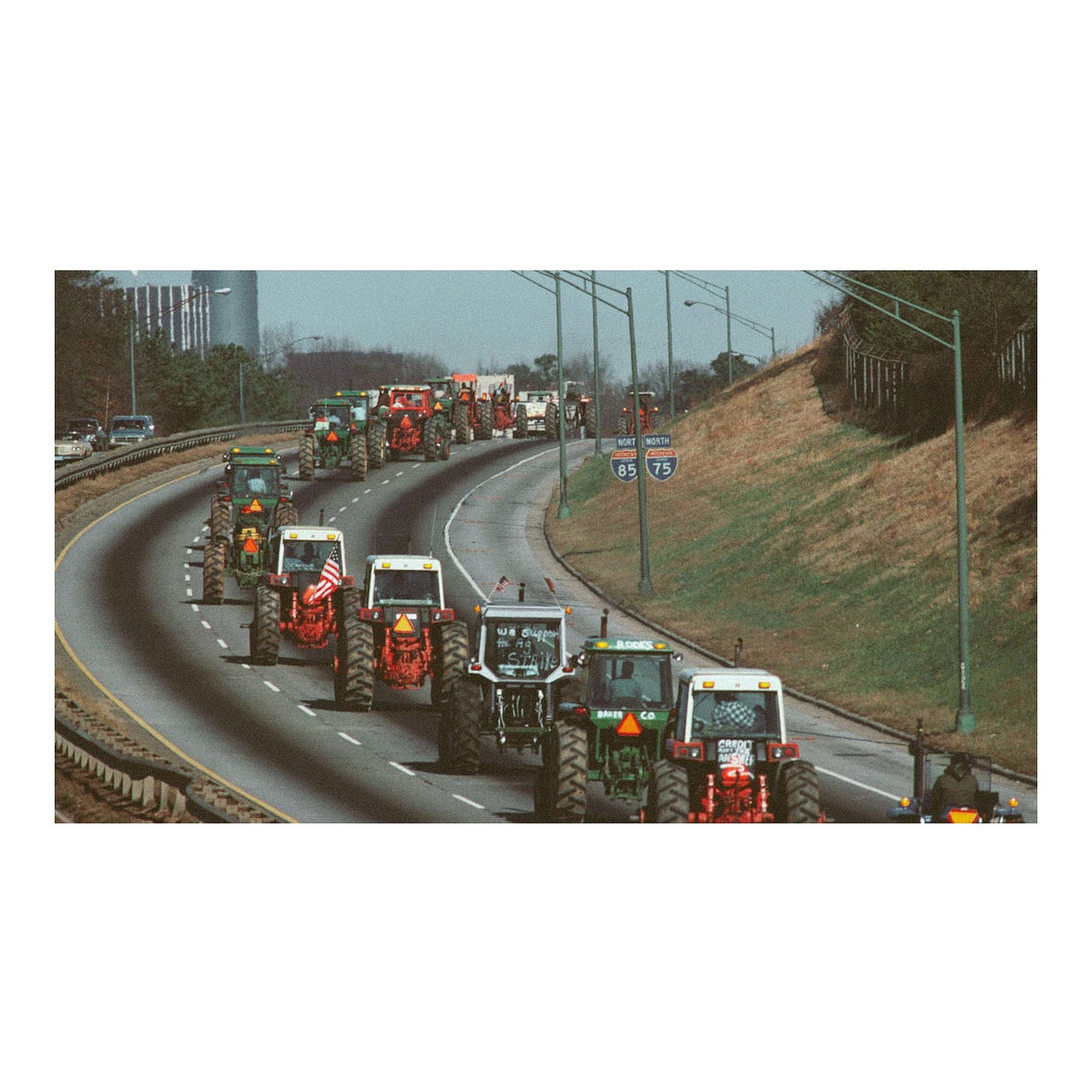
What this tells us about the current situation
“But especially: the exposition of a revolutionary perspective must still consist of describing and explaining what takes place day after day, and is never satisfied with the ridiculous, abstract proclamation of general goals.”
– Guy Debord, Letter to Afonso Moteiro
We must not underestimate the farmers’ capacity for struggle; they have always been apt to mobilize in spectacular fashion. Blockades with tractors, manuring town halls, releasing pigs on the freeway: nothing is totally new here, only the tempo of the mobilization. The FNSEA is being torn apart, the movement’s going on the offensive; what we’re seeing ever since the Gilets Jaunes movement, and increasingly so, is that the people know how they should talk to the state.
A certain pattern from the Gilet Jaunes playbook might seem familiar: mobilization on a scale that seems trivial to a left that is totally disconnected from this fringe of the population; slogans that demand a better quality of life on the broadest of scales, which make the rest of the population vibrate in unison; partial convergence; and a critical distance from the unions. Other sectors then begin to feel they have something in common to express; as in many recent movements, we quickly see the rest of the population feel concerned by the struggle of a single sector, as soon as it frees itself from the usual institutional and media framing. It’s this automatic shift towards something collective, this informal feeling of a collective struggle to be waged, that revolutionaries need to work on; it’s where they ought to put their pens.
What’s happening now is an attempt by politicians of all stripes to fit the protest into their own categories, and a temporary silence from the watchdogs of the State and the FNSEA, who are carefully waiting for the situation to evolve in a direction more likely to lead to decay. They’re stalling, not sleeping: as with the post-Concorde riots, their stupor will only last until they figure out how to seize on the slightest moment of weakness to roll out their rhetoric of a return to order and send in the troops to ensure it.
In the face of all this, we might fear that the revolutionaries will stick to their old habits, lining up empty ideological formulas without trying to understand how to take advantage of the situation. Despite some positive developments since 2018, we remain incapable of changing our modus operandi and even our way of understanding society and its uprisings.
Yet it is precisely the task of revolutionary activists to reflect on the current situation, to anticipate it, to give it a language, to understand its invisible motivations and its grandiose possibilities. As a press release from Action Antifasciste Paris-Banlieue rightly put it, militant enquiry is a primary means of action within everyone’s reach: communicating, investigating, gathering testimonies, delivering observations. This facilitates both overall understanding and communication with the different factions engaged in the struggle.
Against Convergence
This is neither a call for support nor an injunction to rise up. The agricultural world expects nothing from us, and we expect nothing in return.
What the Left describes as the convergence of struggles refers to an artificial coming together of distinct movements, collectives and social groups; artificial because rather than abandoning the kinds of categorical separations produced by the system, the proposed convergence simply lines them up alongside one another, ultimately reinforcing the fundamental divisions. The convergence of struggles relies on the existence of a centralized organization responsible for carrying out a programmatic synthesis of the specific interests of the separate categories: students, wage earners, farmers, agricultural workers, artisans, civil servants, etc. The old Leninist way of doing things is safe and sound: the party owns the working class, formulates its interests and dictates its conduct–the party is everything.
We have little interest in the pious hopes of convergence and the politics of recuperation they struggle to conceal. Nothing will ever emerge from a left so stuck in its ways, be they institutional or extra-parliamentary. We have no illusion of influencing the political sensibilities of anyone on the ground, no matter how many surveys are carried out. But still we refuse to remain passive spectators of the growing grievances and the prospect of the mobilization being surpassed by other sectors of the population–truck drivers and construction workers in particular. If we can’t be the movement itself, we need to be there to understand the nature and scale of what’s happening.
The Charlatan Revolutionary Group
January 2024
SOURCE:
https://territories.substack.com/p/the-left-progress-and-the-peasant
